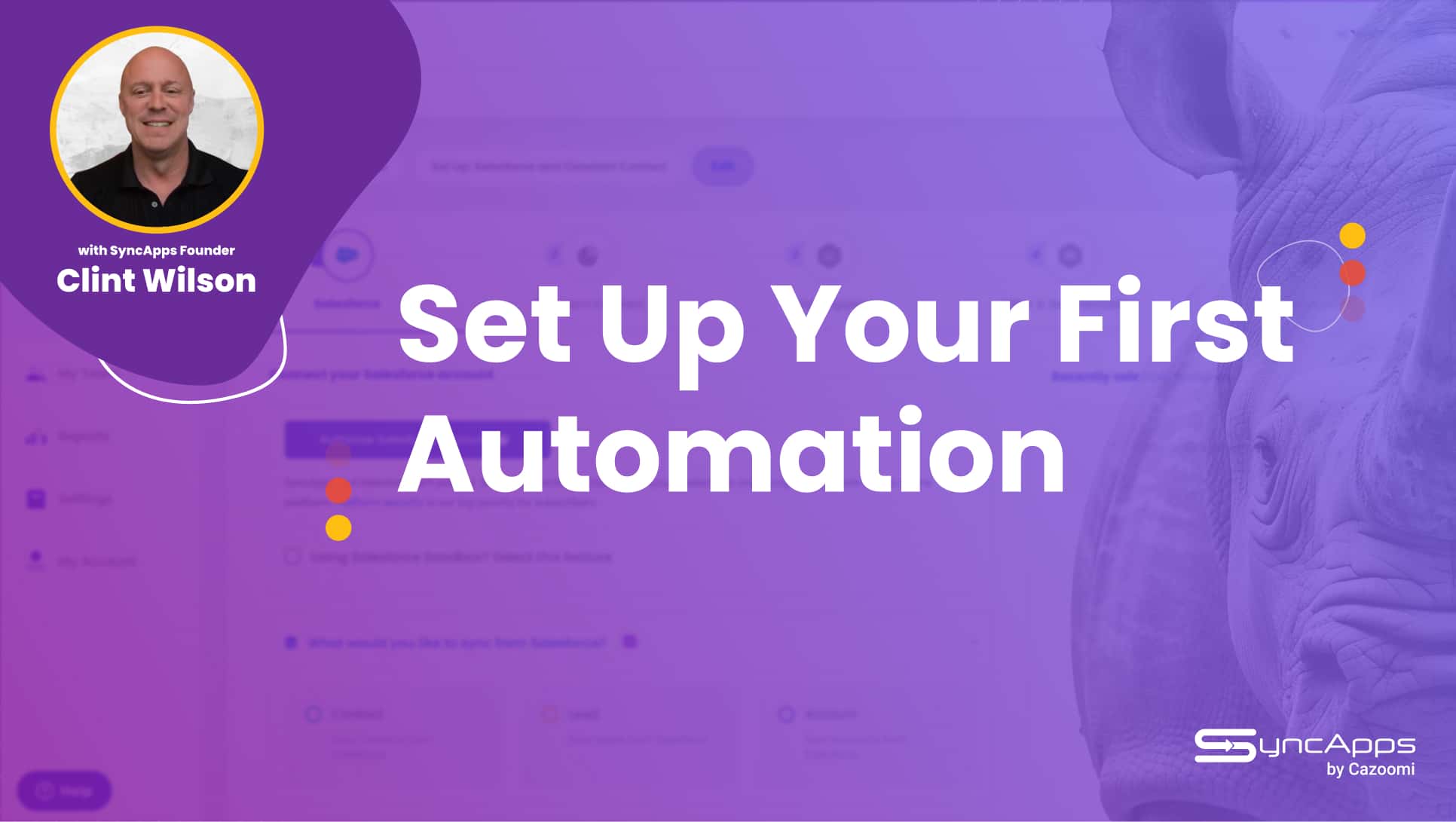Top 39 Salesforce Statistics You Must Know in 2025

Top 39 Salesforce Statistics Every Client or Stakeholder Should Know in 2025
Are you a Salesforce user? Then you’re exactly whom we’ve put these 39 Salesforce statistics together for.
As a Salesforce user, you rely a lot on their system to work flawlessly. We know this because most of our clients are Salesforce clients too and, if something happened to their account, they’d be dead in the water.
While you may not have the time to keep a close eye on every solution that you use, Salesforce should be the exception. Their CRM is so deeply embedded into every business that uses it that, if something were to happen with the company (don’t worry, they’re doing fine, as you’ll see below!), a lot of entrepreneurs would be scrambling.
A quick note before we get to the 39 Salesforce statistics: if you want to leverage this behemoth even more, integrate it with your marketing automation platform. 25,000 organizations do this on SyncApps, and they have never looked back.
Join them and increase your Salesforce ROI! It takes minutes to get started, and it’s completely free to try.
Before we get to the statistics, let’s do a quick overview of Salesforce.
Quick Facts About Salesforce, the CRM Giant
Salesforce, founded in 1999 by Marc Benioff, Parker Harris, Dave Moellenhoff, and Frank Dominguez, revolutionized the way businesses manage customer relationships. Initially launched as a cloud-based Customer Relationship Management (CRM) platform, Salesforce aimed to replace traditional software models with a more accessible, subscription-based approach.
This innovative model allowed companies to manage sales, customer service, marketing, and other business functions through a unified platform accessible from anywhere with an internet connection.
Over the years, Salesforce has evolved into a comprehensive ecosystem encompassing a suite of applications designed to streamline various business processes. Its core CRM capabilities enable organizations to track interactions with customers, analyze data, and foster stronger relationships through personalized communication and service.
The platform has expanded its offerings to include solutions for marketing automation, analytics, application development, and artificial intelligence, making it a versatile tool for businesses of all sizes.
With its focus on customer success, Salesforce has garnered a reputation as a leader in the CRM space, consistently ranking at the top of industry surveys and reports. The company’s commitment to innovation is evident in its continuous updates and enhancements, ensuring that users have access to the latest features and functionalities.
Additionally, Salesforce’s robust integration capabilities allow organizations to connect with other systems, enhancing the overall efficiency of business operations. As of today, Salesforce serves over 150,000 customers worldwide, making it a critical tool for companies seeking to improve their customer engagement and drive growth.
39 Salesforce Statistics — Do You Know All of Them?
There’s a lot to be said about the top CRM in the world. So, we’ve broken these Salesforce statistics into categories so you can easily navigate to the ones you’re interested in.
Salesforce Statistics: Revenue at a Glance and Market Share
- Salesforce generated $34.86 billion in revenue for the fiscal year 2024, an increase of 11.2% from the previous year. You can see Salesforce’s full financial reporting here.

- Salesforce holds a 21.8% share of the global CRM market, surpassing its four leading competitors combined.
- Salesforce’s annual revenue has grown from $176 million in 2005 to $34.9 billion in 2024, with a CAGR of 32.10% over this period.

- Approximately 93% of Salesforce’s total revenue comes from subscription and support services, estimated at $32.54 billion in fiscal year 2024.
- Salesforce’s Service Cloud generated $8.25 billion in revenue in the fiscal year 2024, marking an increase of 11.89% from 2023.
- Revenue from Marketing and Commerce offerings was $4.91 billion in 2024, representing an increase of 8.77% over the previous year.
- The Integration and Analytics segment (including MuleSoft and Tableau) generated $5.19 billion in revenue in 2024.
- The Sales Cloud and Service Cloud together account for approximately 48.25% of total subscription and support revenue in fiscal year 2024.
- In 2023, Salesforce’s net profit was reported at around $4 billion, reflecting a significant increase from previous years.
- The average annual growth rate (CAGR) for Salesforce’s revenue is projected to be around 18%, with expectations to reach $50 billion by 2026.
- In fiscal year 2024, professional services and other revenue were approximately $2.32 billion, making up about 7% of total revenue for Salesforce.

- The overall revenue growth for Salesforce was nearly 10%, increasing from $31 billion in 2022 to $34 billion in 2023.
- In fiscal year 2023, the Service Cloud generated nearly $7 billion, making it one of the company’s top revenue sources.
- The Marketing Cloud generated around $3 billion in revenue during the same period.
- The average deal size for Salesforce customers has increased by approximately 15% over the past two years.
- Over the last decade, Salesforce’s CAGR stands at around 29%, reflecting its rapid expansion and market penetration.
- Salesforce’s revenue is projected to reach $50 billion by 2026, reflecting a compound annual growth rate of 18%.
- By the end of fiscal year 2023, more than half of all new subscriptions were tied to multi-cloud solutions offered by Salesforce.
- Since going public in 2004, Salesforce has consistently grown its revenue each year, reaching nearly a 2.63x increase since 2019 alone.
Salesforce Statistics: Who Uses Salesforce and How?
- More than 150,000 businesses use Salesforce globally.
- To put this number into perspective, consider that the number of customers using Salesforce has increased from 13,900 in 2005 to over 150,000 in 2024.
- The US accounts for nearly 67% of Salesforce’s total revenue, generating about $23 billion.
- Europe contributed approximately $8 billion, representing about 23% of total revenue in fiscal year 2023.
- Approximately 90% of Fortune 500 companies use Salesforce products to enhance their customer relationship management strategies.
- By leveraging AI tools like Einstein, customers have executed over 270 billion predictions, enhancing decision-making processes across various industries.
- In terms of engagement metrics, there were over 511 million commerce page views recorded through Salesforce platforms.
- The number of service chatbots deployed through Salesforce reached approximately 2 million, improving customer service efficiency.
- More than 86 billion records were ingested by Data Cloud, showcasing the platform’s data handling capabilities.
- Approximately 50% of new customers are small and medium-sized enterprises (SMEs), indicating a growing focus on this segment by Salesforce.
- In terms of user experience enhancements, over two-thirds of users reported improved productivity after implementing Salesforce solutions.
Misc Salesforce Statistics
- The number of employees at Salesforce reached 72,682 as of January 31, 2024.
- Salesforce’s employee count has grown significantly since 2005, when it had only 767 employees; this represents a growth factor of approximately 94% over the years.
- In early 2023, Salesforce began layoffs that resulted in an 8% reduction in its workforce.
- As of January 31, 2024, approximately 46,516 employees at Salesforce are men, while 26,165 are women, showcasing ongoing diversity efforts.
- Salesforce has been recognized as the world’s #1 CRM provider by IDC for eleven consecutive years as of 2024.
- The global CRM market is expected to reach approximately $150 billion by 2026, with Salesforce maintaining a leading position within this market segment.
- The company’s AppExchange marketplace features over 5,000 applications, providing extensive options for customization and integration.
SyncApps is on the AppExhange, too! And we have a 4.2-star rating! Check us out!
- As part of its sustainability efforts, Salesforce aims to achieve net-zero greenhouse gas emissions across its entire value chain by 2040.
- Around half of employees (51%) are based in the United States, while the remaining 49% are located internationally.
Wrapping Things Up: Top Salesforce Statistics You Should Know in 2025
These 39 Salesforce statistics paint a clear picture: the behemoth is not going anywhere, and it will continue to dominate the CRM market for the foreseeable future.
So, if you’re a Salesforce client, you can rest assured the platform is not going anywhere. In fact, we’d recommend you take your relationship with Salesforce to the next level.
Integrate it with your marketing automation platform and unlock whole new levels of ROI and data-driven insights. Start here for free!



